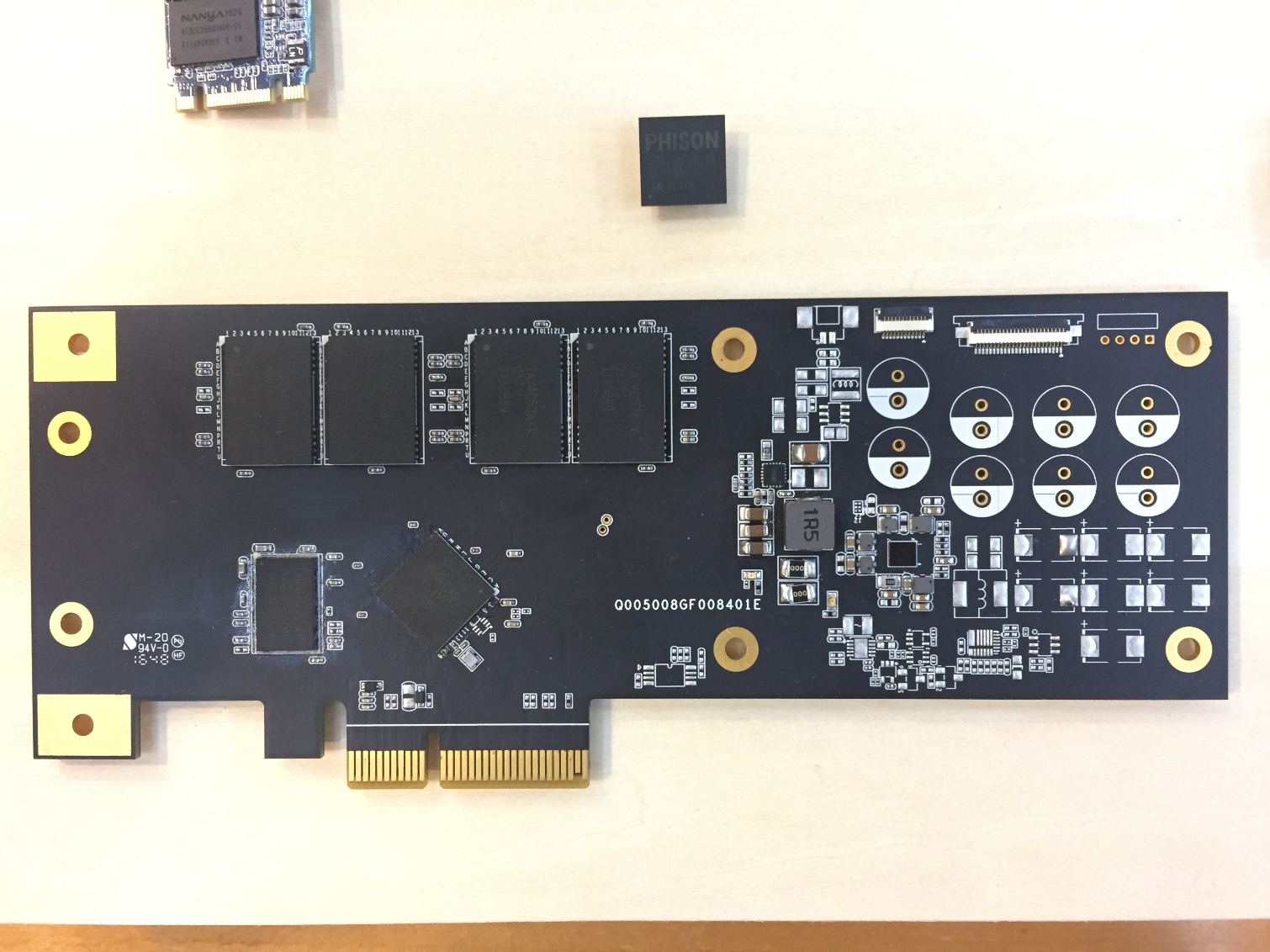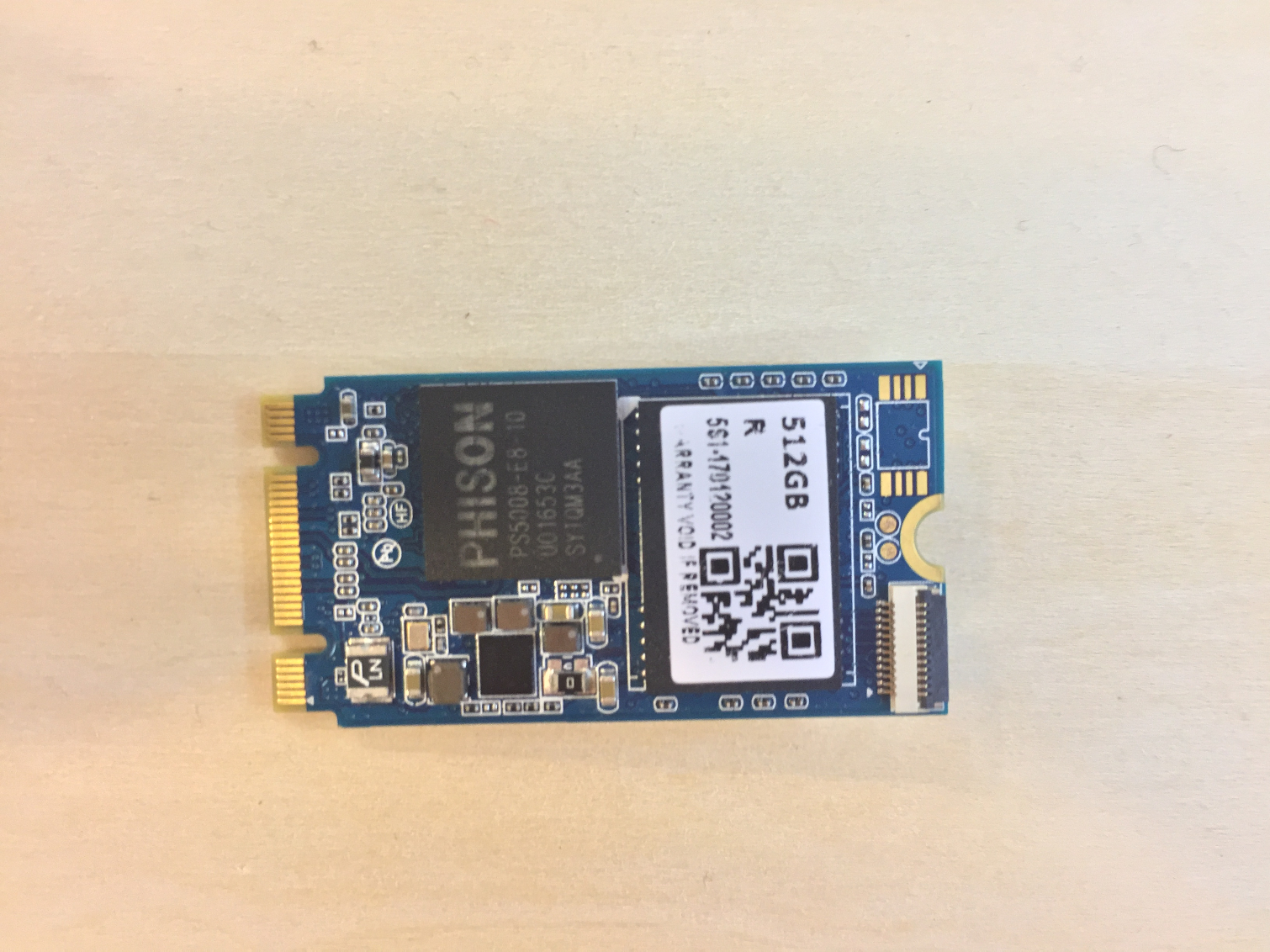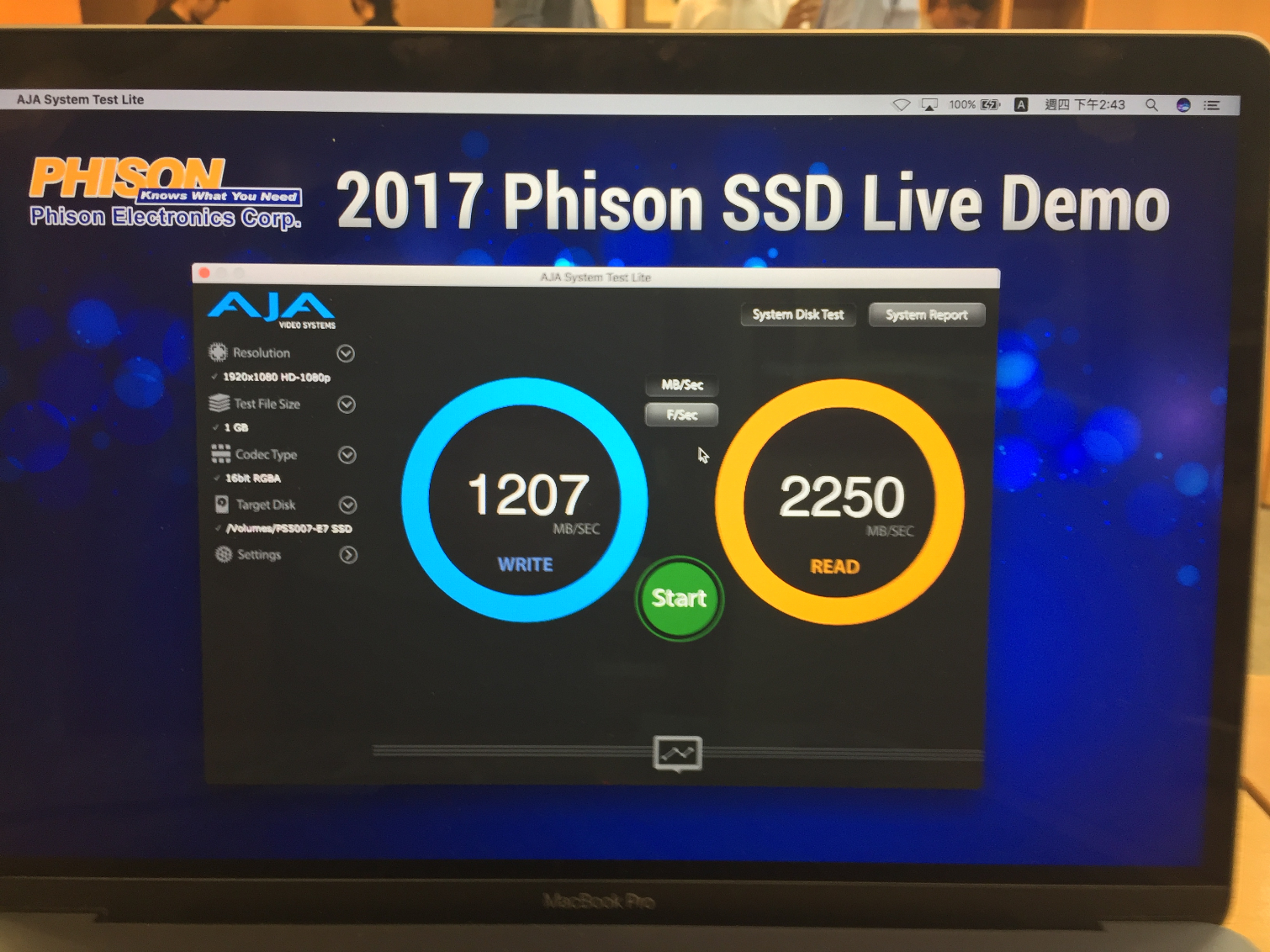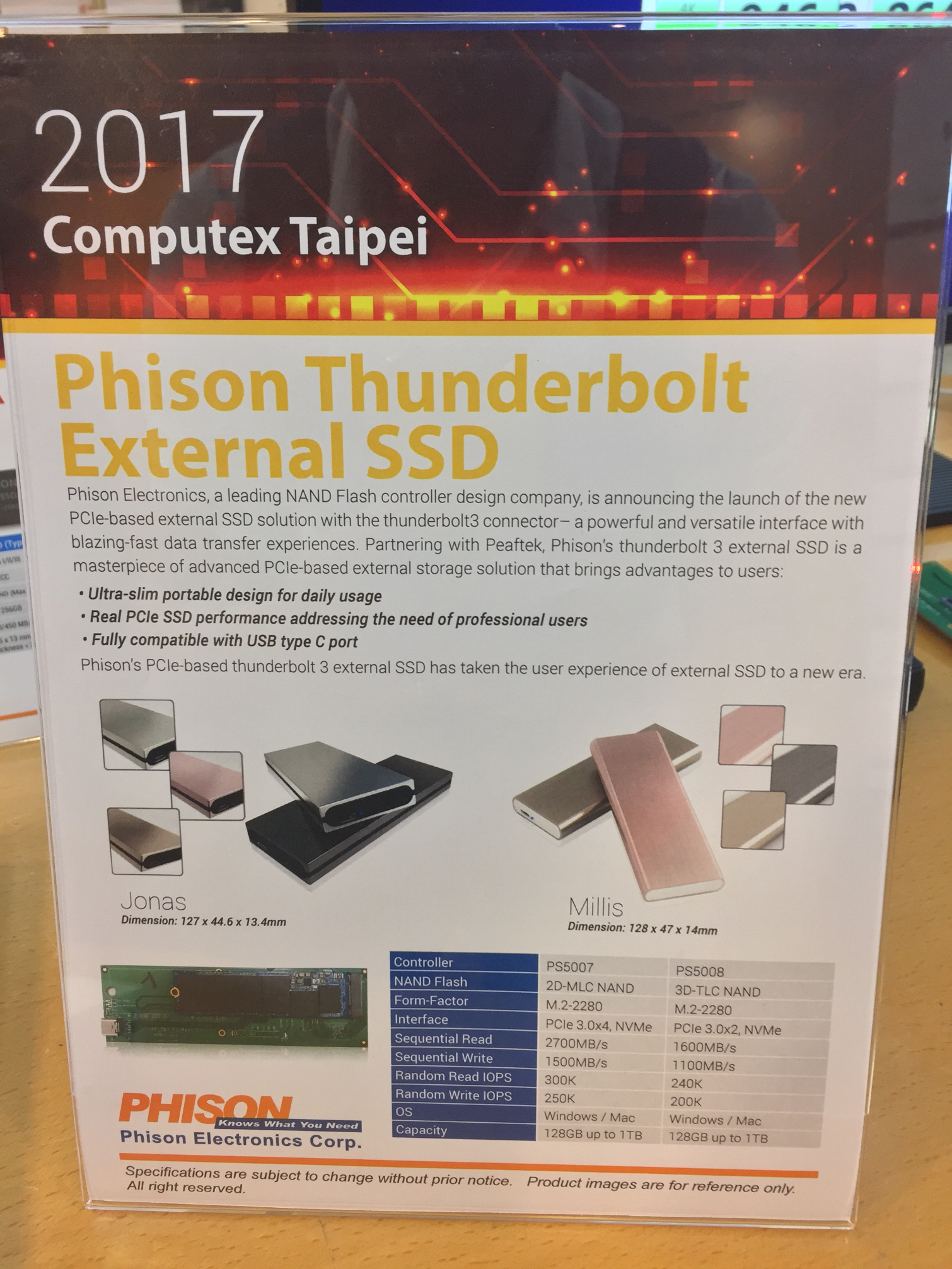Phison Optimizes E8 For 3D TLC, Intros First Thunderbolt 3 External NVMe

Phison celebrated Computex 2017 by kicking off two new products designed to make your life better. The first is the long awaited PS5008-E8 NVMe SSD that we first talked about during CES in early 2017. The second product is a new Thunderbolt 3-to-NVMe bridge chip designed to enable partners to build high-speed portable storage solutions.
The two new editions to the Phison family can work together, and we expect partners to bring the duo out as a package. Several companies at Computex displayed Thunderbolt 3 portable flash drives in a similar form factor and with similar speeds. We assume many, if not all, had Phison components inside. Many of the companies didn't have too much information on the drives, and we can take that to mean the companies just picked up the reference design samples in the days leading up to the show.
Phison PS5008-E8 SSD Controller
PS5008-E8 development followed the same path as the E7 that many users chose to embrace in 2017. The early reference designs are nearly indistinguishable from the E7 parts we first saw two years ago. If the same timeline works out, we should start to see this controller in retail products as early as July, but Phison and its partners are at the mercy of Toshiba's 3D NAND production schedule.
Marvell, Silicon Motion Inc., Realtek, and other companies plan to release new controllers optimized for use with next generation 3D NAND with 64-layers from Micron and Toshiba. The Phison E8 is the only new controller we've spotted that uses a PCIe 3.0 x2 configuration. The drive has exactly one-half the bandwidth from the host to the controller compared to the other M.2 products. On the surface that sounds like a poor design decision by Phison. It will certainly will stand out on specification sheets, but paper and reality often conflict, and the E8 may actually have the upper hand during this round.



Let's start with power consumption, because that's where we expect to see the largest difference. The motherboard in the system should consume less power, with only two lanes passing data to the SSD. Just keeping those lanes off will save a measurable amount of power over a battery charge. The SSD should also consume less power, but that's just a theory at this point.
The paper specification for sequential performance will suffer against comparable performance with PCIe 3.0 x4 products using the same flash. Because most, if not all, next generation flash will be TLC, the x4 advantage diminishes. The sequential data writes should be nearly identical after the initial SLC buffer burst. Companies advertise the burst speed but not the sustained write speed that's limited by the native TLC write performance and not the programmed buffer.
The untold advantage here is actually deep in the architecture. Phison chose a quad-core design for the PS5008-E8 controller in an era where dual-core controllers for low-cost devices is standard. The passe design should give the E8 a real advantage during mixed workloads and during background operation activity like garbage collection and wear leveling. It's two lanes exchanged for two cores. Time will tell if the trade makes for a better entry-level NVMe SSD.
Get Tom's Hardware's best news and in-depth reviews, straight to your inbox.
Phison Thunderbolt External SSD
Are you ready for your external SSD to be as fast as your internal SSD? We're not talking about dropping a 2.5-inch, previous-generation SATA drive into a bulky $10 case with a USB 3.1 Gen 1 attached to a Type-C port so it looks fast. We're talking about full on NVMe speeds over Thunderbolt 3, the interface that offer 32Gb/s of data flow just like your internal PCIe 3.0 x4 M.2 ports. Before you blow up the comments about Thunderbolt 3's 40Gb/s advertised speeds, understand that 8Gb/s comes from the video portion of the spec. The actual chip can transfer only PCIe 3.0 x4 or 32Gb/s.



Phison went all John Wayne with the two reference designs, with a display of 2,250 MB/s sequential read and 1,207 MB/s sequential write speeds with a rare Phison M.2 2280 SSD. These products should come to market in both MLC and TLC models and with E7 and E8 controllers. Phison doesn't sell the actual reference designs to the public, but partners like Patriot, Corsair, and a number of others should bring these to market in one form or another.
The display we saw comes from partner Peaftek International from China. We'll be giving them a call soon to try to arrange an early sample to test and share with you. At this time we don't know too much about availability and pricing. We do know that starting in 2018, Intel plans to release a new processor series with Thunderbolt 3 built into the CPU die. That should increase the number of devices with the technology by a significant number.

Chris Ramseyer was a senior contributing editor for Tom's Hardware. He tested and reviewed consumer storage.
-
derekullo NVME SSDs are now fast enough, in fact we are already approaching the theoretical maximum bandwidth of the x4 pci-e slot..Reply
32Gb / 8 = 4 gigabytes a second
The samsung 960 pro is 3200 MB/s read and 2100 MB/s write
I was reading news of x8 and x16 pci-e ssds with stupidly fast speeds ... double and quadruple of the above.
Let's focus on bringing 10 gigabit Ethernet over copper as a consumer standard.
Even with my sata ssd my 1 gigabit network feels like Los Angeles during rush hour whenever i try to backup.
We've had gigabit since 1999, back when 20 gigabyte drives were the norm.
Make Twisted Pair Great Again.
#9TerabyteBackupsAren'tForGigabit -
computerguy72 Derek... A lot of that speed never actually happens. So many factors that effect it tremendously. The QD alone can trim that speed like 97%, among many other things... Massive amounts of running room to achieve real world performance. A little disturbing how so many think the raw bandwidth is anywhere near what you really get on average.Reply -
derekullo Reply19775390 said:Derek... A lot of that speed never actually happens. So many factors that effect it tremendously. The QD alone can trim that speed like 97%, among many other things... Massive amounts of running room to achieve real world performance. A little disturbing how so many think the raw bandwidth is anywhere near what you really get on average.
I understand the difference between IOPs and theoretical maximum bandwidth/throughput.
A 9 terabyte backup should be enough to qualify as "massive amounts of running room".
I'm not really sure what you mean, but 9 terabytes is alot lol.
I could see if i was transferring a 40 megabyte file with gigabit and you were trying to compare it to 10 gigabit, you wouldn't notice the difference due to the size of the file being smaller than the transfer speed of the slowest connection be tested.
It would appear instant on both.
My nas4free server is currently more than capable of saturating a gigabit connection (125 megabytes a second) for both reads and writes.
With the right hardware it is fairly easy to saturate a gigabit connection, in fact if I was reading data that was in my nas4free's arc cache and writing it to another computer it would saturate a 10 gigabit connection assuming the destination storage was up to par, at least a gigabyte per second of writes, which a Samsung 960 Evo and Pro are both easily capable of doing.
Increased queue depth increases speeds, not reduces and this only really applies to random workloads.
http://www.tomshardware.com/reviews/samsung-960-pro-ssd-review,4774-2.html
In any case, since my backups are sequential writes queue depth doesn't really matter. -
nzalog Yes, because developing affordable 10GB Ethernet is mutually exclusive to continuing development of faster SSDs. /sReply -
Brian_R170 Reply19774432 said:The samsung 960 pro is 3200 GB/s read and 2100 GB/s write
Pretty sure that's MB/s, not GB/s. -
Daekar3 It's amazing how fast things progress. My current desktop runs SATA drives with USB 2.0 and a few 3.0 ports. By the time it gets too long in the tooth, things will be TOTALLY different.Reply -
derekullo Reply19777679 said:19774432 said:The samsung 960 pro is 3200 GB/s read and 2100 GB/s write
Pretty sure that's MB/s, not GB/s.
Thanks Brian, typo.